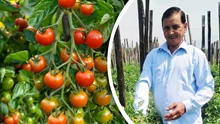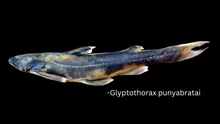
Rice has a rich history, dating back to thousands of years as one of the earliest cultivated crops. It has grown across various regions and continues to be a popular and affordable staple food in many cultures. However, to ensure profitable rice production and meet the high demand, farmers need to protect their crops from pests using insecticides and herbicides that were not available thousands of years ago.
There are several types of pests that can significantly impact rice yields. Termites and rice water weevils, for instance, feed on the roots of the plants, while "stem borers" attack the shoots as they grow. Other pests like grasshoppers, beetles, and leafhoppers can damage the leaves, hindering the plant's growth and grain production. Additionally, planthoppers and grain-sucking insects, such as stink bugs, can cause further harm by feeding on the base, stem, or grain of the rice, resulting in reduced yield and susceptibility to diseases.
Popular Rice Insecticides
Carbaryl
Carbaryl, also known as 1-naphthyl methylcarbamate, belongs to the carbamate family and is primarily utilized as an insecticide. Initially marketed under the brand name Sevin by Bayer, it is a white crystalline substance. The rights to the Sevin trademark were later acquired by GardenTech, which has largely removed carbaryl from its Sevin formulations.
In 1958, Union Carbide was responsible for the discovery and commercial introduction of carbaryl. Bayer acquired Aventis CropScience, including Union Carbide's pesticide operations, in 2002. Carbaryl ranked as the third most widely used insecticide in the United States for various applications, such as home gardens, commercial agriculture, and the protection of forestry and rangeland. When employed as a veterinary drug, it is referred to as carbaryl. In India, the cost of Carbaryl 250 mg Online from Carbanio India cost nearly Rs 3,320.
Piperonyl butoxide
Piperonyl butoxide (PBO) is an organic compound with a pale yellow to light brown liquid appearance. It is commonly employed as a synergist in pesticide formulations. Although it does not possess pesticidal properties on its own, it acts to boost the effectiveness of specific pesticides like carbamates, pyrethrins, pyrethroids, and rotenone. PBO is derived from safrole through a semi-synthetic process.
MGK-264
N-Octyl bicycloheptene dicarboximide (MGK 264) is a component found in certain common pesticides. It does not possess inherent pesticidal properties itself, but rather acts as a synergist, enhancing the effectiveness of pyrethroid ingredients. It is utilized in various household and veterinary products.
MGK 264 is beginning to be included in pesticide monitoring lists implemented by states that have legalized and mandated pesticide monitoring for medical and recreational cannabis. This is likely a result of the extensive use of pyrethroids in cannabis cultivation and the potential utilization of MGK 264 to maximize crop yield.
In a nutshell, farmers use a combination of insecticides and herbicides tailored to their specific needs. The choice of pesticides depends on various factors such as the type of pests prevalent in the region and the desired duration of protection. However, it is important to consider the potential presence of chemical residues on harvested rice and take appropriate measures to ensure food safety.











